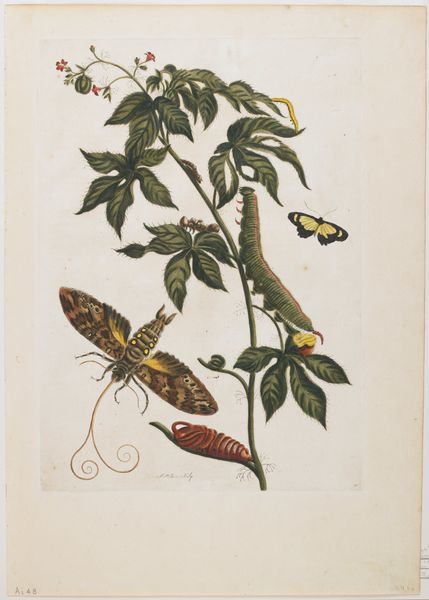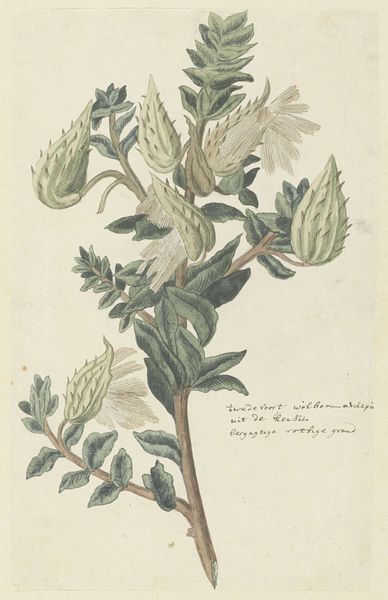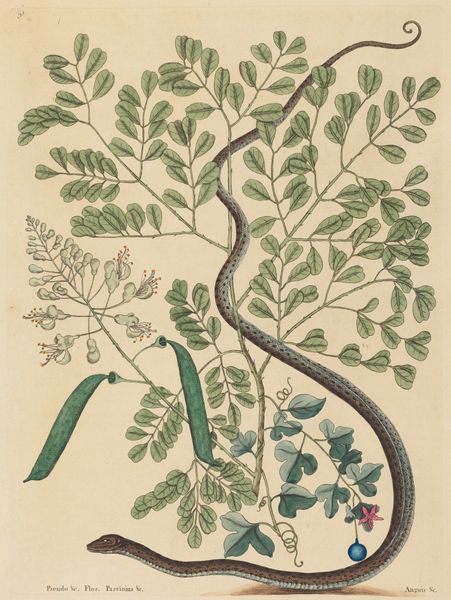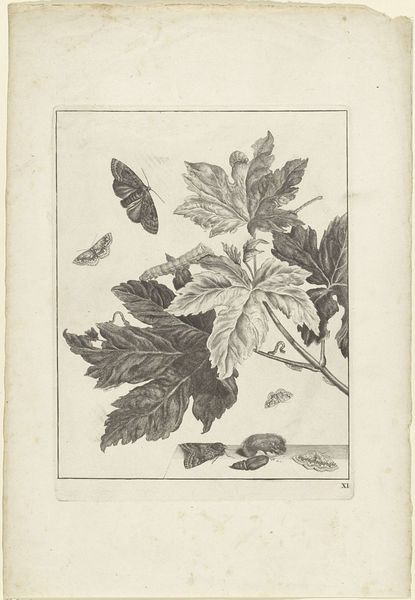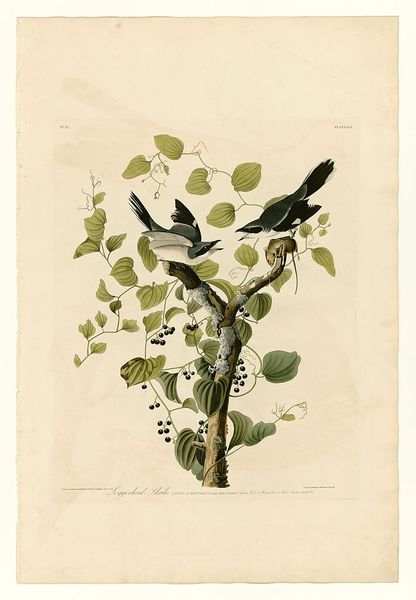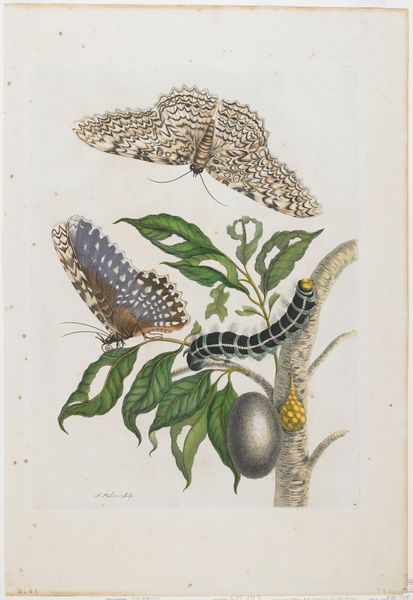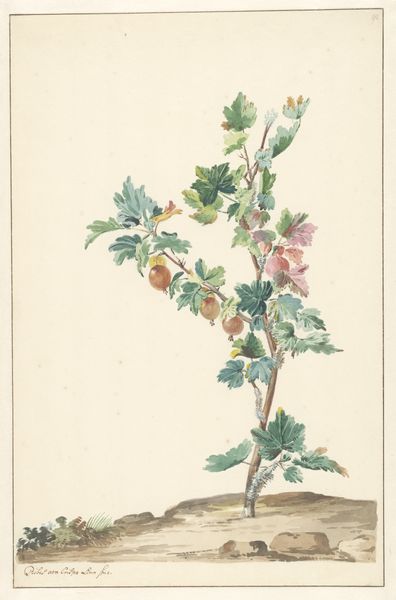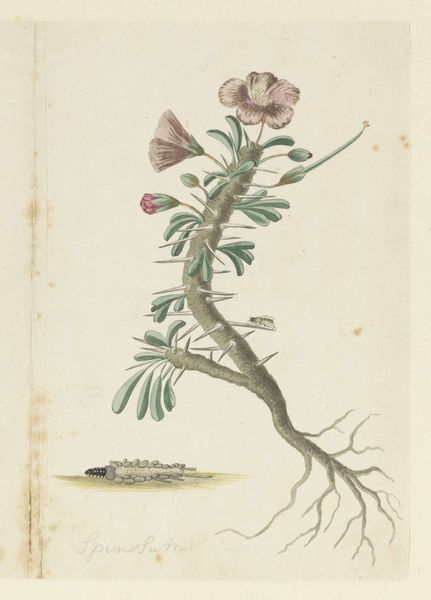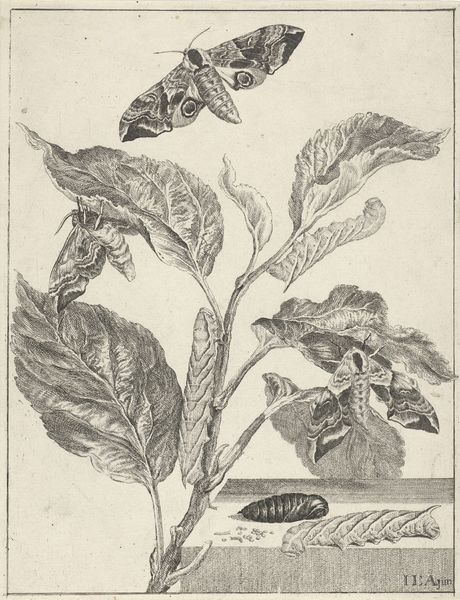
drawing, painting, gouache
#
drawing
#
baroque
#
painting
#
gouache
#
landscape
#
culinary art
#
history-painting
#
botanical art
Copyright: Public Domain
Curator: This is “Oak branch with owlet moth, caterpillars and pupa” by Maria Sibylla Merian, completed sometime after 1679. Executed in gouache, it’s a striking example of botanical illustration. Editor: Oh, my goodness, it feels so alive! The detail in the leaves, the sheen on the acorns... it's like stumbling upon a secret world, brimming with quiet, crawling energy. It has almost a hushed, expectant feel. Curator: Merian was truly remarkable, bridging art and science. We have here not just a depiction of an oak branch, but also an intricate study of an entire life cycle. Her intersectional vision considered that the insects weren't separate from the branch and plant-life, but an intimate component. Editor: Absolutely, you see the transformation unfolding right before your eyes: caterpillars munching away, the promise of the pupa, and that beautifully rendered owlet moth perched so delicately. It's so vibrant! It's almost dreamlike, but intensely observed. Curator: Her work challenges us to examine our relationship with the natural world, too. Before Merian, insects were frequently viewed as repulsive, but here they are elevated to a status worthy of artistic consideration. This could even connect to broader theories of social exclusion and 'monstrosity' used as historical social control mechanisms. Editor: Wow, hadn't considered it in that lens, but I see what you mean, it speaks to challenging preconceived notions of what is valuable or beautiful. I suppose it's also about time, the transformation from something thought of as disgusting to what's beautiful takes a lot of... patience, reflection, and observation! Curator: Precisely! She spent years observing insects in their natural habitats. Editor: What an extraordinary woman she was. This artwork reminds us that beauty and significance are all around us, in the smallest, most overlooked corners of the world, don't you think? Curator: Agreed. And to approach nature, and art, with open, critical, and politically aware minds. Editor: I am now off to go look under every leaf I see, ha! Thank you for opening my eyes even wider!
Comments
stadelmuseum about 2 years ago
⋮
The depiction of three different caterpillars in this illustration from the caterpillar book, published in 1679, is based on the artist’s empirical observations. She realized that, in the course of its growth, this particular species changes colours several times by moulting, a circumstance she took into account in her picture.
Join the conversation
Join millions of artists and users on Artera today and experience the ultimate creative platform.


